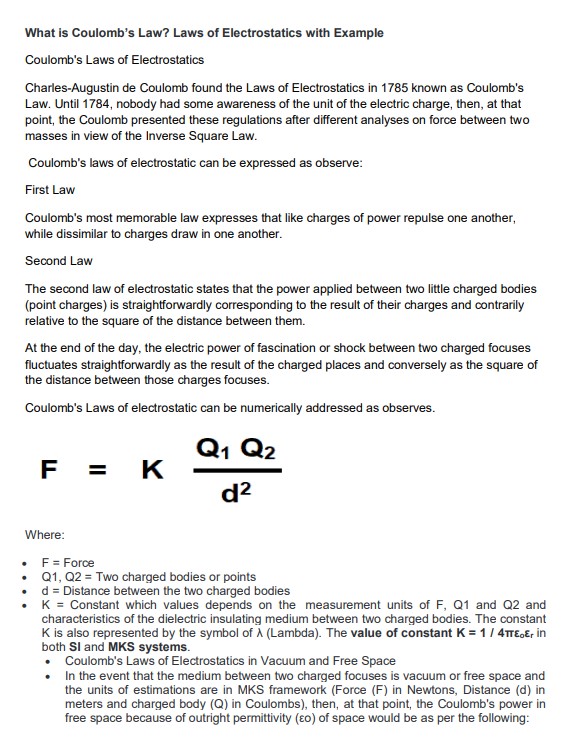Understanding Coulomb’s Laws of Electrostatics
Summary:
Coulomb’s Laws of Electrostatics, discovered by Charles-Augustin de Coulomb in 1785, explain the interactions between charged bodies. The first law states that like charges repel, while opposite charges attract. The second law expresses that the force between two charged bodies is directly proportional to the product of their charges and inversely proportional to the square of the distance between them. These laws are mathematically represented with variables F (Force), Q1 and Q2 (Two charged bodies), d (Distance between the two bodies), and K (Constant dependent on the units of F, Q1, Q2, and the characteristics of the dielectric insulating medium between them). In free space or vacuum, the force due to absolute permittivity (εo) of space is applied, with relative permittivity (εr) considered in mediums other than vacuum. These laws are significant in understanding static electricity, capacitors, magnetism, electromagnetism, and the generation of power in alternators.
Excerpt:
Understanding Coulomb’s Laws of Electrostatics
What is Coulomb’s Law? Laws of Electrostatics with Example
Coulomb’s Laws of Electrostatics
Charles-Augustin de Coulomb found the Laws of Electrostatics in 1785, known as Coulomb’s Law. Until 1784, nobody had some awareness of the unit of the electric charge; then, at that point, Coulomb presented these regulations after different analyses of force between two masses in view of the Inverse Square Law.
Coulomb’s laws of electrostatic can be expressed as observed:
First Law
Coulomb’s most memorable law expresses that charges of power repulse one another, while dissimilar charges draw in one another.
Second Law
The second law of electrostatic states that the power applied between two little charged bodies (point charges) is straightforwardly corresponding to the result of their charges and is contrarily relative to the square of the distance between them.
At the end of the day, the electric power of fascination or shock between two charged focuses fluctuates straightforwardly as the result of the charged places, and, conversely, as the square of the distance between those charged focuses.


Reviews